Retroactive self-constitution
In the past ten years entities with a complex esthetic operativity emerged in the zones of dance and visual arts of Bucharest. Attempts at understanding them are mostly made by insiders, as is the case of this text. Apart from the necessity of grasping what are you part of and to figure these entities out, self-reflection functions as an engine that self-constitutes them. The entities expand in the direction in which they conceptualize themselves, they shape themselves through self-reflection. Self-conceptualization is an internal dynamic for substantiating an esthetic entity, but once a dynamic of self-referentiality is in place, this often extends to the outside. In Postspectacle, one of the esthetic entities, a constant practice is to introduce strange feedback loops, altering, expanding or breaking some of the implicit conditions at work in the respective situations. In the case of Kunsthalle Batiștei, another esthetic entity, a self-referential intervention is made in the basic layer of identity formation, in the correspondence between the name and the project. There is an operation of forced association with a group of institutional practices that enters into a strange relation with its own behaviors, producing some institutional fog around its identity.
The entities’ names are often the symptom of a problem or a question. They may function as a reaction, as almost empty concepts in the beginning, triggering a practice afterward. Postspectacle started as a vague desire to move forward from the spectacle, without knowing what Postspectacle is or could be. It started from the question: what is the point of adding another spectacle to the art world when we are already living in a generalized spectacle? A practice emerged around this question, and consisted in bringing the “outside spectacle” to art spaces. For instance, Postspectacle invited the Romanian Army to host a dance workshop and perform a drill show in a contemporary performance black box. A second practice that Postspectacle developed was to use the performing skills and knowledge of performance on the big stages of mass media, business and politics. The Presidential Candidate, another conceptual entity, was born out of this practice.
In a similar way, Artworld started as a reaction to the type of reality and subjectivity produced in the contemporary world. It started as a desire to compose and explore new ways of worlding, through art. In the process, concepts and practices appeared: Second Body, Dead Thinking, Eternal Feeding, End Dream, Black Hyperbox. The esthetic entities and the concepts that they generate usually start from vague intuitions, and in time, thinking and practices coagulate around them, making them more substantial. They set in motion certain vectors of intention, orient practices and act as attractors to further thoughts. They are not oriented toward conceptualizing some sort of past experience, but to create conditions for new possibility of thought and practice. Actualizing themselves on their own path, the esthetic entities retro-act on themselves from the future.
Their functioning is the content
Dreaming is one of Artworld’s preoccupations, not so much the content of dreams as the activity of dreaming in an expanded sense, including the simulational character of consciousness and world creation. There is an operation of self-referentiality at work in this process: a type of simulation, the awake state, is focused on the mechanism of simulation itself, the dreaming. Usually the reflection upon the simulation does not unfold at the same time with the content of the simulation, but sometimes the self-referential dynamic accelerates and the timing of the reflective operation coincides with the timing of the simulation itself. This is the case in the dreams in which the focus of dreaming, besides the content of the dream, becomes the operation of dreaming itself, and this is somehow the case for many esthetic entities as mediums in which the focus becomes the processes that are conditioning their own existence. The Romanian Dance History is an esthetic entity that enters uninvited on stages of important performances, in important festivals, after the applause, when the audience is ready to leave, saying with a humble attitude something like: “Hello, we are the Romanian Dance History, we are very happy to be here, it is very nice. We would like to present you the Romanian Dance History, it would be short because The Romanian Dance History is weak.” After that, some excerpts from Romanian Dance History are presented, but the content doesn’t matter too much. The implicit activity, the conceptual operation that matters is the unsolicited and alien way of appearing in front of the audience, the forced insertion in the program, skipping and overriding the structures of validation, going around the gates of access, the esthetic content becoming a type of self-referential functioning in its own medium.
In an act of last moment censorship, The Presidential Candidate was eliminated from the Just do it. Branding Biopolitics exhibition at Pavilion Unicredit. The Candidate continued to behave as if nothing had happened, and a promotion campaign was launched. People were invited to celebrate the opening with the Candidate, and with a glass of Dorato champagne (a good-looking bottle with a very cheap and dubious content). The exhibition was announced everywhere as a Presidential Candidate’s event, and the opening as a performance. It turned out to be a very strange scandal as a result of Pavilion staff’s violent reaction. But, again, no matter how interesting the evening as a performance was, the actual work, the main esthetic operation, was the activity of reframing – as a reversal of the usual situation of artists acting under the institutional umbrella, in this case the artists were framing the institution – pointing to the activities of framing in themselves, focusing on their own operativity in their implicit mediums. The same with Kunsthalle Batiștei actions of emulating the art functioning of important art institutions, with an attitude of seriosity and importance in the name, in the public communication, in the type of actions that were launched. It was an imitation of success, in a small precarious garage, without money or any legal status. Because of these inadequacies, the usual smoothness and normalcy of the institutional operations have a second intention, a second effect, a looping dynamic that points to its own operativity more than to the content of its artistic activities.
The accent on their own positions in the structures of the respective event creates a self-referential dynamic that makes the esthetic entities interfere with their determinations, with the implicit atmosphere in their mediums. Self-referentiality affects the overall conditions in which the entity is immersed and, like in dreaming about dreaming, structural effects in the implicit worlding or an exit can be the result. The art world has its clues and pointers that implicitly orient the behaviors, acting as a loose and transparent frame for what is possible to perceive, imagine, think, and do. But an ambiental, or esthetic power is at work everywhere not only in the art world, every world has its orientative ambience. The esthetic entities experiment on a small scale with models that are no longer based on critique, denuniciation, exposure or acts of resistance from inside, but based on directly changing the structural ambience of their respective worlds. They seem to say that new environments are needed, rather than critique and resistance in the implicit ones.
Transversal
To be part of an esthetic entity usually means a constant rethinking of your position in the fields of different mediums, formats, and disciplines. All these domains have their constraints, silent prescriptions and expectations, dragging along their social pressures with their implicit orientations and frames for action. For many conceptual entities the question is not so much how to move outside of these constraints to be free, but what kind of dynamic could emerge between collisions of formats and constraints. Acknowledging dependency and the potential of constraints, The Bureau of Melodramatic Research sees itself as a “dependent institution.” Oscillating between pseudo-academic frames and formats and pseudo-melodramatic ones, the Bureau often overlaps or collides cheesy and exaggerated feminine emotionality with urgent global issues and abstract theory. Sometimes a new genre emerges where everything is at the mercy of abstract passions, philosophically speculative dramas and powerfully rational emotions.
An inadequacy is assumed by many of the esthetic entities. The Presidential Candidate sometimes appears as an artist in political contexts, and often as politician in artistic ones, gaining advantages such as the possibility of entering political campaigns before the legal terms because “it is just art.” The Robin Hood Fund, another esthetic entity, operates within the financial markets and in contemporary arts, parasitizing, transferring knowledge and opening possibilities for access to sophisticated financial instruments otherwise accessible just for very rich people and companies. Many art venues were transformed into temporary Robin Hood financial offices. And many times we had the pleasure of saying, in art environments, that we are bankers. There is a perverse desire to dislocate and transport an entire apparatus from one field to another, to push toward non-art territories, and to bring something alien into the art frames, such as real financial operations, presidential candidate campaigns and abstract philosophy.
The collision of mediums and disciplines can be messy, destabilizing and, for many entities, desirable. In Artworld, instability is by design. The stated desired dynamic is a productive alienation from concepts through experience and from experience through thinking. The Postspectacle Shelter was another environment programmed for all sorts of collisions. This was an event of the Presidential Candidate in the House of the People, which houses the Romanian Parliament and the National Museum of Contemporary Art. In the same space coexisted: a tribune for presidential candidates, a spot for philosophical workshops, a corner for medical assistance, and a canteen where food was cooked and served for homeless people, artists, and philosophers. It was an overlapping of a charity event, a presidential campaign, a philosophical conference, a day shelter, a canteen and an art show. The event marked a rupture of the entities both from the art scene and the activist world. There was criticism and some frustration about the unclear nature of Postspectacle Shelter. Is it art, activism, charity, political event, or what? It was indeed a controversial, monstrous project and, unsurprisingly, the only support for it came from other esthetic entities.
Alienating
The esthetic entities are often inadequate, long-term, complicated, playing with improper formats, pushing toward all kinds of not-yet-art zones, difficult to frame and present. Entities like Artworld, Cooperativa Performativa, Black Hyperbox and the Presidential Candidate experiment with ways of collaborating beyond consensus, replacing the necessity of a common agreement and common product, which are somehow implicit in collaborations, with an amplification of alienation, where each individual has the space to pursue a different direction in the proximity of the others. These forms of collaboration are not represented but enacted in the usually hidden and problematic aspects of art projects, in the inside relations and implicit dynamics. But even if these forms of collaboration are not on display, they leave traces in any form of presentation, and attention for them expands a sensibility for the forms of organization and governance present behind any artwork in general, the individual work included.
But sometimes there are no art products at all that are recognizable as such. In Blank Mountain College some of us met in a place for a while, without any special agenda or aim and, after some time, we met again and continued somewhere else, and again elsewhere. Blank Mountain College seems suspiciously unambitious. It’s atypical because the implicit impulse is to exploit a situation to the maximum, to use the opportunity of having some resources at one’s disposal, to convert any occasion, to be maximally productive, always on a way to success. In the desperate art world, Blank Mountain College, like other esthetic entities, feels like a lost opportunity. But the apparent poverty or emptiness actually unlocks potential. From the inside, the ambition void felt like a relief, because you are suddenly disconnected from implicit orientations and have the luxury of a less instrumentalized time. And the lack of pre-determination and instrumentalization produced a different quality of interactions and a special environment.
When the requirement is to fill a niche, to be clearly identifiable and assigned to a type of art, the complexity and unpredictability of the entities, with their distance from the implicit approaches and formats, seems alienating. While artists are expected to manage themselves and more or less consciously adjust their attitudes and behaviors to implicit art world demands, performing in the sphere of success’s requirements, the entities often push their artists toward “unsuccessful” attitudes and behaviors. As an entities’ artist, you can expect to remain under the radar of mainstream institutions, hidden in a pre-career stage, with a para-art presence. A self-reflexive para-art, the acknowledged situation, feeds back the thinking and actions of the entities, influencing ideas and situations such as “being no-one,” “losership,” “give up hope,” “dead thinking.” Paradoxically, this negativity has a positive feel, creating a bit of a nothing-to-lose atmosphere. It is more fun than desperation, or is maybe a funny desperation. What from the art world perspective can be seen as a persistent defiance toward the requirements of success, and self-sabotage, is neutral or even positive from the point of view of the entities’ system of valorization.
Besides the esthetic entities’ alienation in the art fields there is a second, subjective alienation. In time, the esthetic entities function more and more as environments, shaping the artistic visions and options for the people involved. After a while, it’s not only that artists work and develop the entities, but more and more the entities shape and work upon their artists. In the process, they recode and override some of the structures and implicit commands that shape what is possible and desirable to perform and imagine in the art world. For entities’ artists, it becomes difficult to be totally embedded in the art world’s implicit suggestions and habits. This exteriorization of personal artistic agency could feel like alienation for the people involved, but mostly a necessary and desired one, and with larger implications. Like any other world, the contemporary world formats subjectivities with some implicit thoughts, patterns of behavior, and perceptions. To have a perspective and an influence on these layers, it is important to create ways of acting from exterior ways of alienating oneself. Some external devices are needed to trigger us out of our own inscribed patterns and regularities. The esthetic entities can function as exit devices from the particular type of subjectivity encouraged by the art environments, and maybe even from the usual production of subjectivity in the society.
Art worlds
The esthetic entities are not objects to be exhibited, nor performances to be seen or texts to be read. They are not research or experiments nor immaterial art, but they can be all of these and more. They don’t have a sharp and clear presence. They cannot be presented as events or finalized and condensed as products. They include artistic processes and products but their esthetic capacities are somehow always beyond their appearances. Their esthetic emerges from an amalgam of elements, from their complexity. They are esthetic compositions of people, processes, capacities, frames, concepts, behaviors, attitudes, affects. They are conceptual operations that function as platforms, as ecosystems, as wholes, that precede the details, as esthetic artificial organisms. They work as worlds, in the sense of complete behavioral spaces that affect the transcendental implicit conditions of their own existence, as the physical worlds curve the time and space around them.
They are small experimental worlds, like spaceships that have to be self-sufficient and to endure extremely hostile environments. Like the explorers who leave behind the long tuned structures functional at home, the esthetic entities have to rethink all the vital components, to mess with the foundations. The homely safety net is missing and all kind of things have to be improvised. An esthetic entity has to reinvent esthetic operations, forms of collaborations, and of presentation, to mess with its own determinations, and implicitly be at risk with its environment. Failures happen, premature disparitions or monstrosities could appear. Because they are messing with the consensual realities, they are unpleasant. In the beginning nobody likes new esthetic entities, but in time they can be absorbed and become cultural goods, and function as zombie-entities, or they can expire when their time has passed. Eventually, if they don’t have a good death, they may haunt the living as ghosts or just disappear as if they had never occurred.
- Robin Hood Fund is an international entity that has as founder members many artists who are active in the other esthetic entities mentioned.
- Blank Mountain College was born in Oslo and the initiators are in contact or active in other esthetic entities mentioned.
The esthetic entities were for sale at Art Brussels 2016.
POSTED BY
Florin Flueras
Florin Flueras works with performance, text and the creation of “esthetic entities”. The entities are complex compositions of people, concepts, processes, capacities, frames - artworks as artworld...
www.fflueras.ro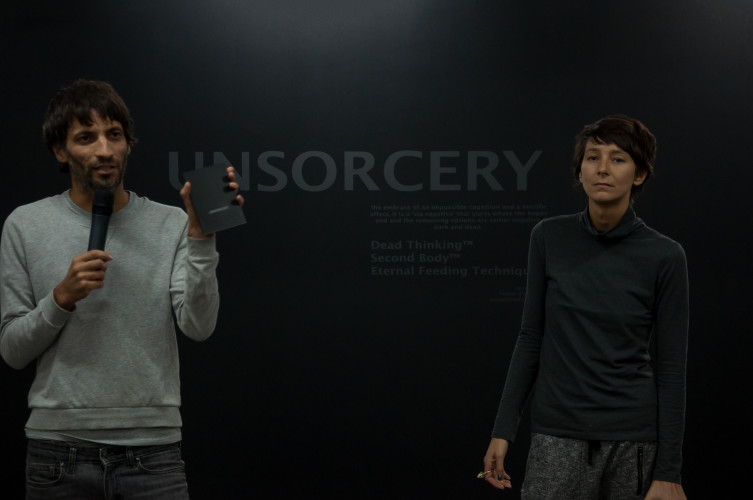
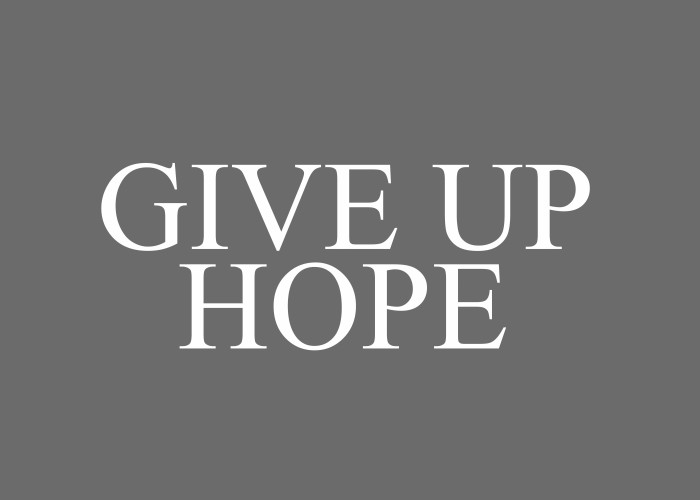
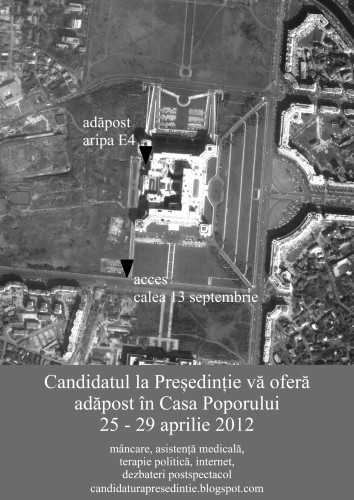
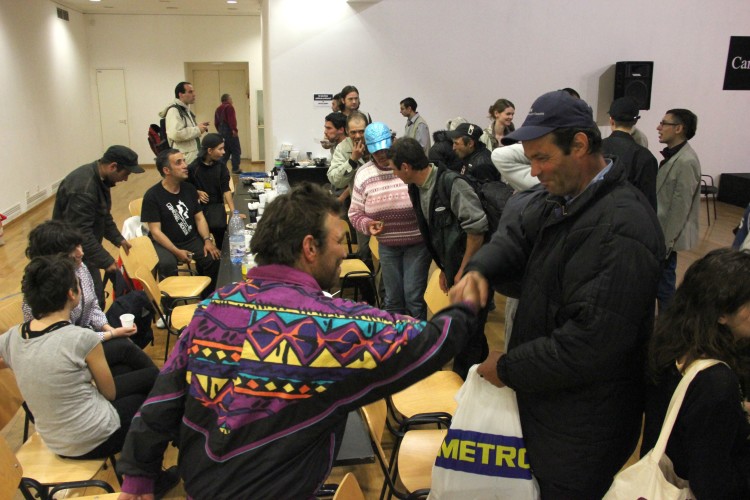
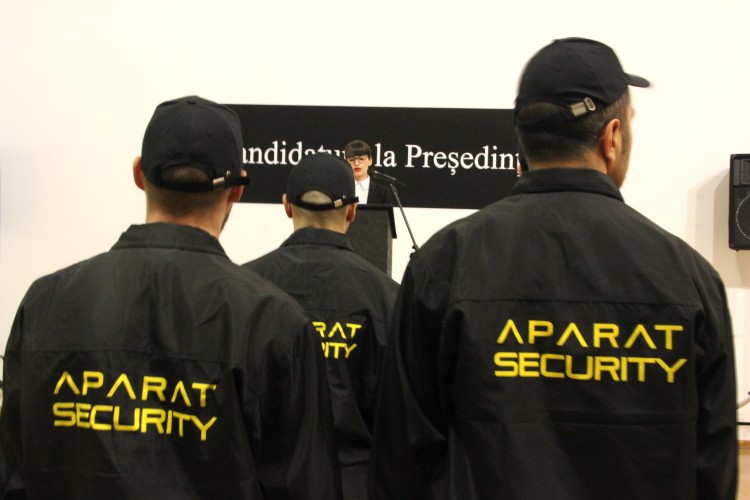
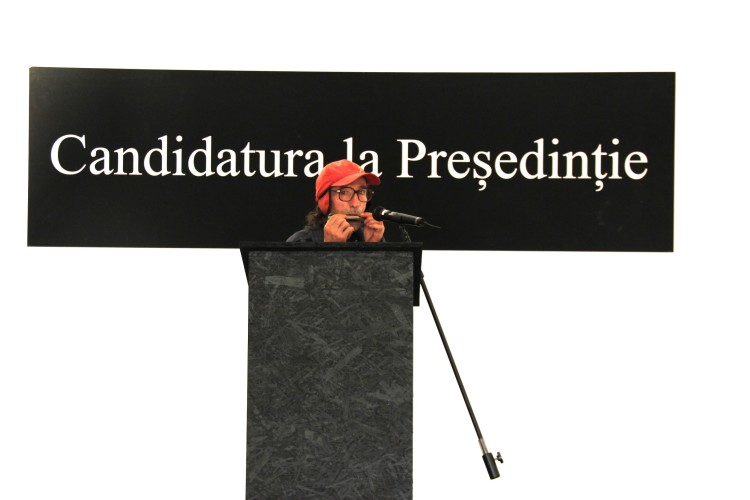
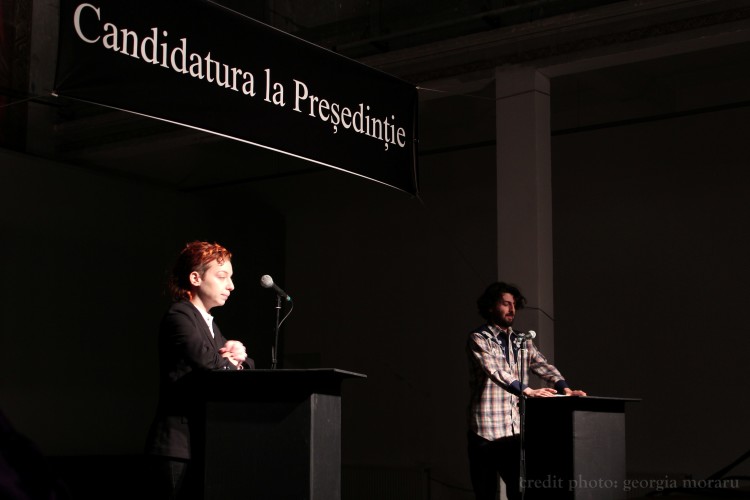
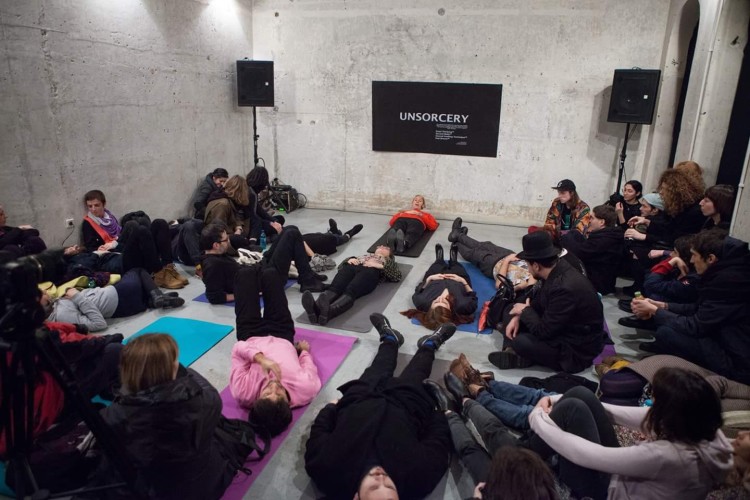
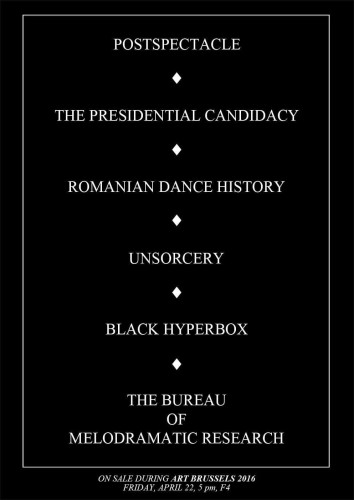
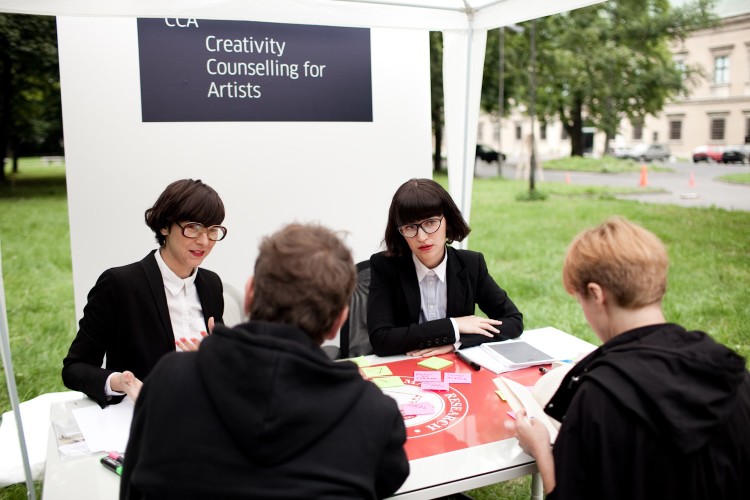
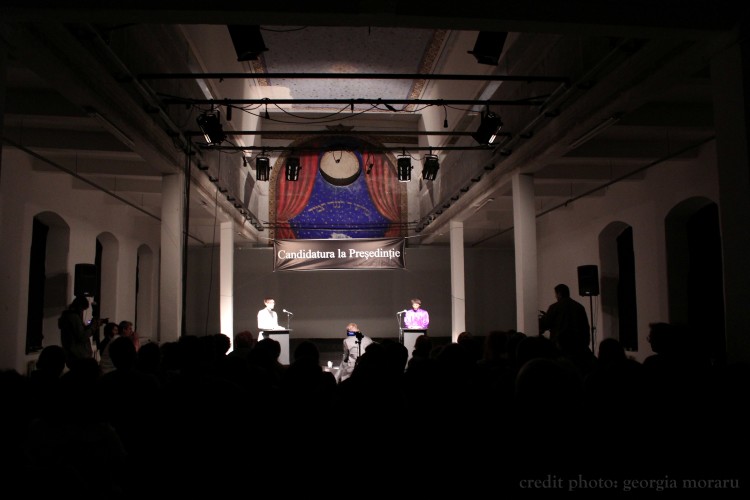
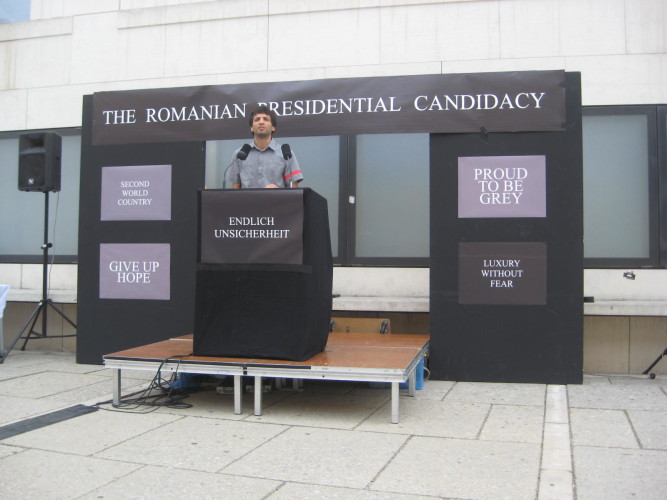
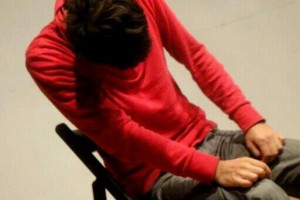
Comments are closed here.